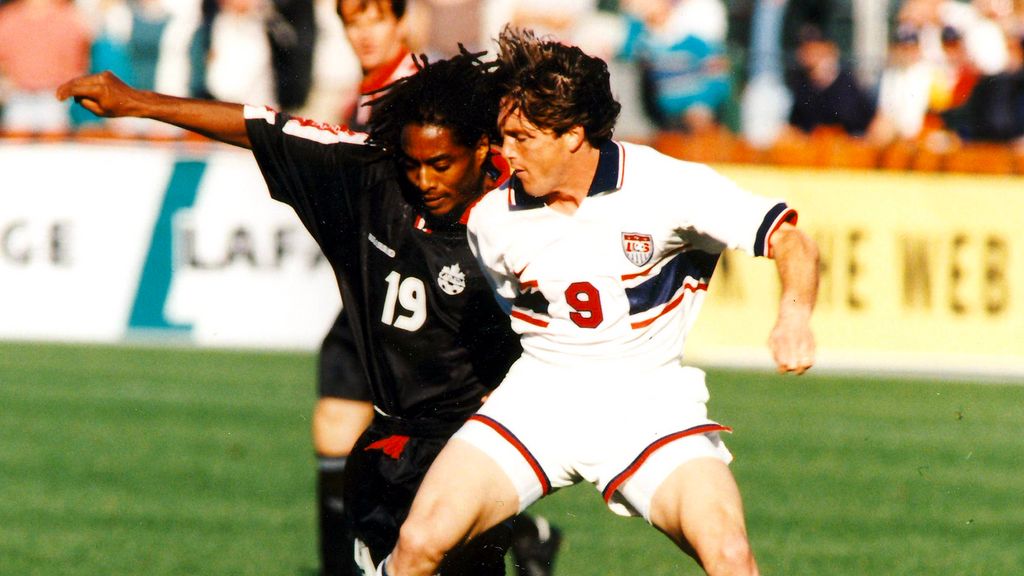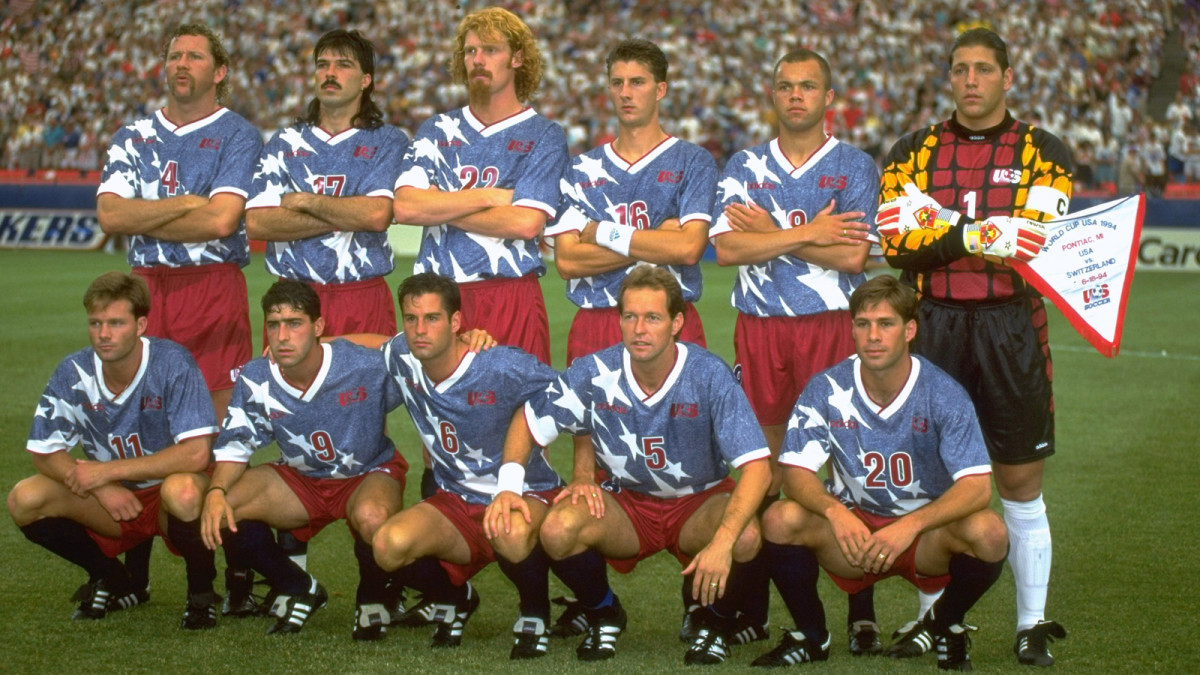How the U.S. used '94 World Cup hype to grow the game (and how Canada can do the same)

If you're a soccer fan in the United States, there's a lot to like with the direction that the sport is trending in these days.
On the men's side, a young and hungry USMNT returned to the 2022 FIFA World Cup after missing out in 2018, and will also co-host the 2026 edition of the tournament alongside Canada and Mexico. Their upward momentum is set to fly over the next half-decade.
At the domestic level, the country's main soccer circuits, Major League Soccer and the NWSL, are thriving. MLS sends the most players to the World Cup of any non-top 5 European league, has continued to expand across the country, and has grown to stand on its own two feet after years of wearing a 'retirement home' label for signing aged superstars from abroad. The NWSL just celebrated a decade of competition after another memorable season, won by Christine Sinclair's Portland Thorns.
On the back of a recently agreed monumental equal pay deal, it feels like the sport is on a major upswing in the United States, and is set to explode in popularity even more over the next decade.
But how did they get to this point?
It's a question Canada's own soccer landscape will be pondering after making the men's team made their own return to the FIFA World Cup after a 36-year absence. All eyes will be on Les Rouges, as the idea of local soccer pride makes its way into the average Canadian household for the first time in decades. What comes next will be key to Canada's footballing future.
The Canadian soccer landscape, today

In Canada, domestic men's league football is still developing across the country. Things are trending in the right direction, as the Canadian Premier League has produced four seasons of memorable club football, have reached important milestones at home and in Concacaf, taken their MLS rivals to the sword in the Canadian Championship, and sold players to Toronto, Vancouver and Montreal, as well as abroad.
While there is still no professional women's league (or team) in Canada, work is being done by people like Diana Matheson to build those foundations, too. That's key, as both the men's and women's national team players have worked to strike a similar equal pay deal as their U.S. counterparts, too.
Confirmed at the #unmatchedconference
— wsoccer.ca (@WsoccerCa) August 10, 2022
Steph Labbe and Diana Matheson are working towards creating a domestic league in 🇨🇦
Stay tuned. #dmathsArmy
The Canadian women's national team are now bona fide gold medalists, while the men's team made major strides in World Cup Qualification to announce themselves as power players in Concacaf. Never before have Canadians commanded as much global respect and admiration as they do today; players like Alphonso Davies, Sinclair, Jonathan David, Julia Grosso, Tajon Buchanan, Jordyn Huitema, Stephen Eustaquio, Jessie Fleming, Kadeisha Buchanan and Atiba Hutchinson stand as equals to their global contemporaries.
All this has Canadian soccer at a similar crossroads as their southern neighbours experienced nearly three dacades ago, when the U.S. hosted guests from around the world and introduced themselves to the global footballing audience at the 1994 FIFA World Cup.
This tournament can serve as an accelerant across all these fronts, so Canada would do well to heed these lessons from '94 as they build their own momentum heading into 2026, too. Canada has a unique opportunity to really kick start their own growth, as they find themselves close to a key inflection point.
How the U.S. grew their beautiful game

To understand where Canada find themselves today, consider the state of U.S. soccer in the 1980s.
At the time, the sport was in a tough spot. The men's team was in a drought that saw them miss out on every World Cup between 1954 and 1986, while the women’s team was in its infancy, having been created following some monumental legal developments with the passing of Title IX.
Everything changed at the turn of the decade. First, the U.S. managed to secure the rights to the 1994 edition of the men's FIFA World Cup, shortly before then actually qualifying for the 1990 edition of the tournament for the first time in 40 years. Then, the women's team won the inaugural FIFA Women's World Cup in 1991, as a young Mia Hamm introduced herself to the world.
Each of these individual developments served as stepping stones toward the creation of MLS in 1993, which then officially launched in 1996. On the women's side, U.S. Soccer managed to start a league in the form of the WUSA from 2001-2003, which then led to the WPS from 2007-2012, and then, fuelled by the lessons learned from the failings of the previous two leagues, the NWSL from 2012 to today.
For Canada, it's easy to see the parallels between them and the U.S. of the 1990s.
On the men's side, there's the fact that they've just qualified for their first World Cup in decades and are already set to make it back-to-back given that they're co-hosting in 2026, while on the women's side they're looking to sustain their recent international success, using it to spur the creation of a league of their own.
Not a bad year for #CanPL moves, eh?
— Alexandre Gangué-Ruzic (@AlexGangueRuzic) July 27, 2022
Lukas MacNaughton —> #TFCLive
Kadin Chung —> #TFCLive
Diyaeddine Abzi —> Pau FC
Victor Loturi —> Ross County
William Akio —> Ross County
Mo Farsi —> #Crew96 (via Crew2)
Aribim Pepple —> Luton Town 🔜?
Lowell Wright —> #VWFC 🔜?
Big growth pic.twitter.com/LNKFSWNSeR
While growing that women's league along with the success seen on the men’s side with the CPL, it is hoped that a healthy total soccer ecosystem will materialize, laying deep roots across the country to serve as the foundation of continued success at the international level for decades to come.
What's next for Canada?

It's important that Canadian soccer structures take advantage of the tremendous opportunity these sets of circumstances have given to them, as these don't come around often – the last thing you want to do is waste them.
Over the last decade, Canada hosted the 2015 FIFA Women's World Cup, a tournament that was meant to convey the country's love for the game, but is instead remembered for controversies about turf fields and playing standards, and, most importantly, failed to yield a women's league in the country, as desired.
It's imperative that these milestone moments propel growth by inspiring change when the spotlight is shined on those structures that most need them. With the momentum surrounding the sport hitting new levels post-2020, and only set to rise with what's to come, it's crucial to ensure that Canada curates the right ecosystem to thrive in over the next decade and beyond.
As the U.S. has shown, doing so will have a huge impact down the road, and will pay off for decades to come.
A strong Canadian Premier League is vital for sustained player development opportunities. Make no mistake about it; while Joel Waterman may be the only CPL alumnus in the national team today, that number will only increase in the years and decades to follow. Ditto that, when a women's league finally does emerge in Canada.
Waterman's call-up did something interesting in this country, and it's something that needs to be highlighted.
On paper, he is a last-option centre-back – literally the no. 26 in a 26-man squad.
In reality, his call-up made CPL fans across the country proud to see him make it. It offered hope to every HFX Wanderers FC supporter, dreaming of better tomorrows. It emboldens every Forge fan, determined to see Hamilton produce their own national team icons. It legitimized the work that Tommy Wheeldon Jr. and Cavalry FC have done, as they spotted Waterman in the first place. Make no mistake about it – these moments of local pride matter, and they must matter enough to exist for our women's team, too.
In Canada's long-stated quest towards becoming a true soccer country, this ecosystem is arguably the final and most important missing piece of the puzzle, one they'll now seek to strengthen and grow over the next few years under the sunlight of the World Cup.

